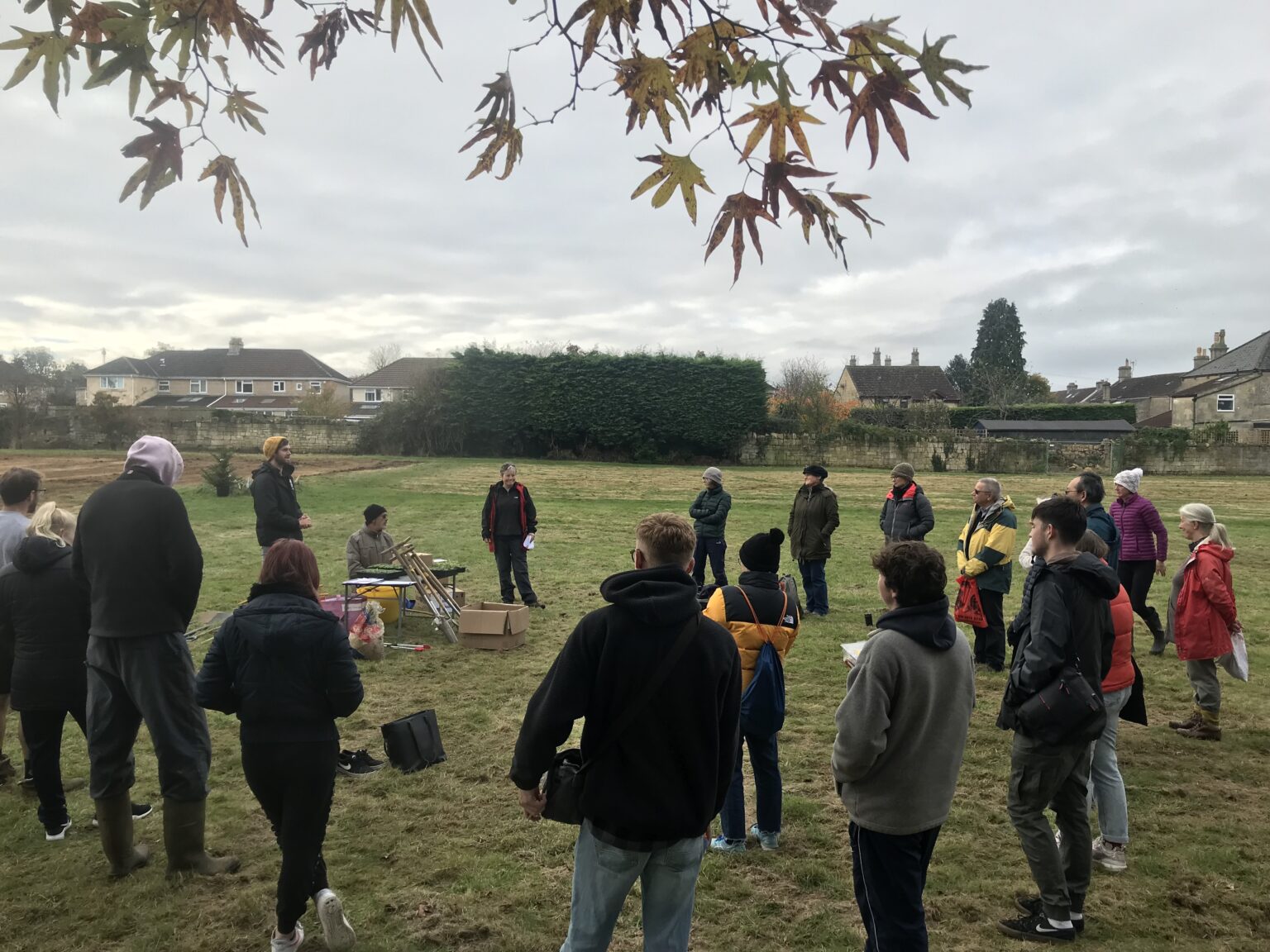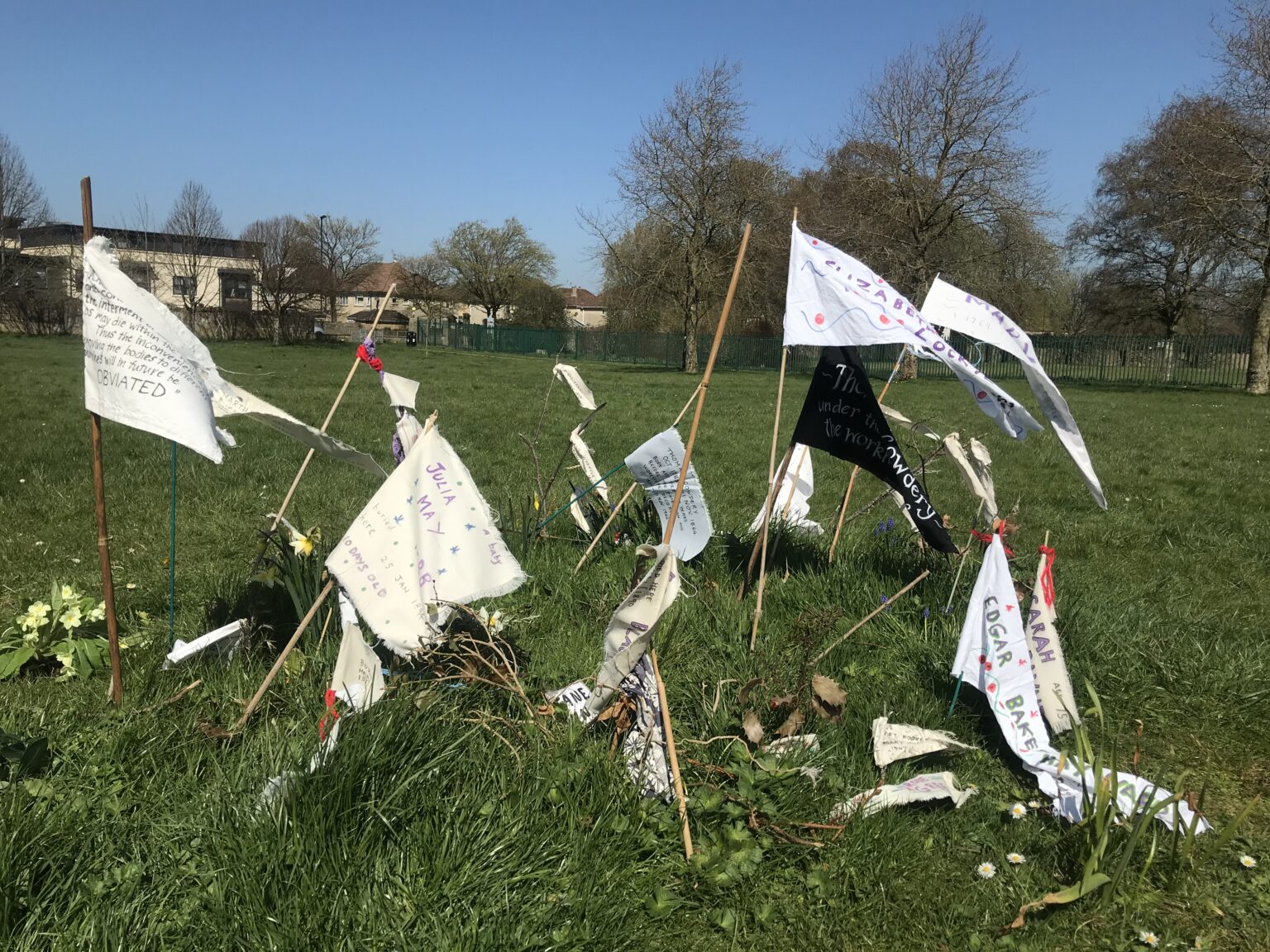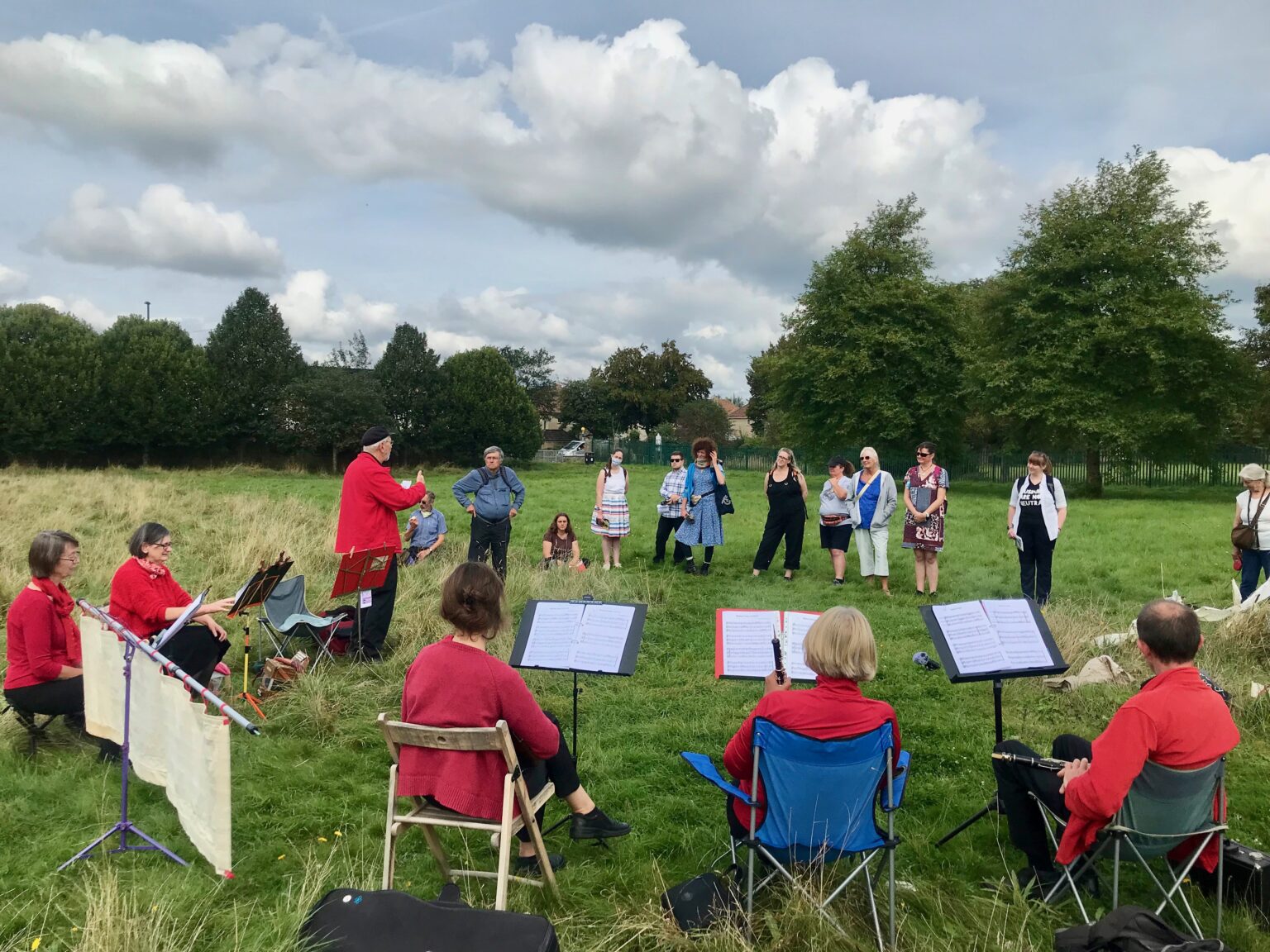Trees will grow and a wildflower meadow bloom at Bath’s Union Workhouse Burial Ground. A place of memory and reflection is emerging thanks to the work of local residents, artists and descendants of those buried there, unmemorialised, in unmarked graves. As the official memorial to a slave trader was toppled in Bristol, people in Bath sought to memorialise those officially forgotten. Bath Workhouse burial grounds do not exist on any modern map, there is no signage or plaque. Following a long campaign for recognition, this is beginning to change. The autumn and winter of 2021 saw a series of planting events at one of the sites and a plaque was installed at this long overlooked and formerly forgotten field.


Bath Union Workhouse still stands as grim and foreboding as ever, overlooking the UNESCO World Heritage designated city. The building, established as a result of the 1834 Poor Law Amendment Act, was opened in 1838, replacing ‘poor relief’ provided by 24 surrounding parishes. The entire system was funded by a local tax paid by landowners, often the very same people who were then benefitting from their windfall share in the £20m Government ‘compensation’ scheme for slave-owners. These tax-payers were the same people who were memorialising themselves in the buildings and street names of the city and constructing the mythology of colony and empire. The same people who, a generation or two before, had enclosed the common land, pushing those who had worked on the land towards the city. Some of the elders buried in the Workhouse field, and many whose remains are in the burial ground alongside the chapel, came from rural Somerset, Wiltshire and Gloucestershire. The Workhouse warehoused those unable to be economically active, the young, the disabled, the aged and infirm, all were punished, stigmatised for being poor.

That punishment continued into death. Instead of having the costs and trouble of returning bodies to their parish, the Workhouse authorities bought and got the Church to consecrate land for burials. This was going on up and down the country. Research by Bristol Radical History Group and the publication on the Eastville Workhouse (Ball, Parkin, Mills 2015) was an inspiration for the Bath project. Bath Workhouse has two burial grounds holding the last remains of over four thousand individuals, one alongside the chapel contains 1107 bodies and the Workhouse field where, between 1858 and 1899, over 3100 bodies were buried. The only memorial is to rock-and-roll hero, Eddie Cochran, who died in Bath’s old Workhouse building (by then St Martin’s Hospital) following a car accident in Chippenham. Cochran’s body, however, was flown to California.


In 2017, John Payne, whose great grandparents died in the Workhouse and were buried in the field, researched and presented an exhibition at the Museum of Bath at Work. Part of his research had turned up a diary for 1856 kept by the Workhouse Schoolmaster, William Winkworth. Winkworth led his children, mainly the boys, on many long walks, including an epic 17 mile walk on a hot summer’s day around several of the northern parishes. Was this to tire the lively lads or to show them off to the parishioners or as some kind of performative warning? We don’t know, but this evolved into a cycle of public participatory walks hosted by John and artist Richard White. A closing walk to the burial ground coincided with the first Bathscape Walking Festival and has been associated with it ever since.
Following the 2019 Walking Festival burial ground walk, Richard White made the pledge to walk and read the names of all those buried in the field in the order of their burial. With Cochran’s hit ‘Two Steps to Heaven’ still echoing off the workhouse walls a slow walk seemed an appropriate approach. The project Walking the Names was a monthly slow walk across the workhouse field, participants walked as slow as they could taking turns to read names from the Workhouse register. The reading was paced by the tolling of the actual Workhouse Bell which Richard had recorded at the Museum of Bath at Work exhibition. This slow walking, reading and listening was a powerful experience drawing in other walkers and passers by. Each walk ended with a gathering, sharing, occasional poetry readings and discussion.
Monthly walks and readings continued as the virus struck. When gatherings were prohibited, walkers continued, and some recorded their readings. These were played back on the site, and Richard edited these into a series of monthly videos. He subsequently produced a series of locative soundscapes, Echoes, working with these readings and sounds. At this time walkers began to mark their presence and acknowledging ancestors by leaving flowers or some biodegradable offering at a central point in the site. This point, shown on the late 1890’s map of the site, had a cluster of stones poking through the grass. In living memory this had been some kind of stone trough or table, a ‘home’ for childhood games of tag. It is possible that these stones are all that remains of a memorial to the Workhouse chaplain, John Scott, who in 1865 chose to be ‘buried with his flock’. This place where the old stones poked through became a gathering point and a place where the ‘poor’ memorial emerged.
One spring day as the grass grew tall the memorial was completely scalped by the contractors’ mowers. The ‘poor’ memorial was back within a day and through into the winter it grew with larger and taller flags often flying the name of a particular individual. Each Walking the Names renewed the ‘poor’ memorial. As the death toll of the virus grew, the walking became a space to reflect on those modern-day deaths in underfunded care homes, and to consider the legacy of the workhouse. Returning to walk together in late summer 2020 a set by a group of folk musicians, Bath City Jubilee Waits, gave the event a particular poignancy. Those buried in the Workhouse Burial Grounds were bundled into the ground out of sight. This was their final punishment. No final celebration of life. Bath City Jubilee Waits played the sound track for the wake the Workhouse dead were denied.
Through into 2021, Walking the Names continued completing the reading of all the names of those buried in the Workhouse field. A research group formed to flesh out the stories of some of those buried. One committed researcher, Aileen Thompson has made minibiographies of 48 individuals and is still going. These are available here. With news of a building development bid on the burial site beside the old chapel, monthly readings have continued there. Following further virus-related delays, and with the support of Bathscape and the local Community Association, the project evolved again towards making more lasting and sympathetic changes on the site. Bath and North East Somerset Council who own the site agreed to some experimental changes in the mowing pattern.

There was some guerrilla planting around the central stones and, in October and December 2021, officially endorsed planting sessions took place, firstly wild flowers and then trees. The events were well attended and documented by a group of students from Bath Spa University. The plaque installed in October fell victim to trophy hunters, but Bathscape on behalf of BANES Parks department has pledged to renew this and to set up an orientation panel for the site. Funding efforts continue to support a more formal memorial. The Workhouse field is still consecrated ground. Local residents hope that the old Chapel might become a museum and indoor space for reflection, respecting ancestors and considering the present.
We are looking forward to the spring.


Notes/references
Ball, R., Parkin, D., & Mills, S. (2020). 100 Fishponds Road: Life and Death in a
Victorian Workhouse. Bristol Radical History Group.
John Payne has produced a short booklet based on his research for the Museum of Bath at Work exhibition. This is being sold to raise funds for a formal memorial. The booklet is available from MoBaW and the Odd Down Bookshop
Payne, J. (2020). Workhouse to Hospital: for a brief account of the Odd Down site of Bath Union Workhouse. See also John’s article here https://thebathmagazine.co.uk/the-bath-union-workhouse/
Group research open folder: https://drive.google.com/drive/folders/1UIcVz98-i7coM9g756z3GbfDV2ZJmE6I?usp=sharing
Bathscape is https://www.bathscape.co.uk/a Lottery Funded Landscape Partnership in Bath
Echoesxyz locative audio experiences at the Workhouse Field https://explore.echoes.xyz/collections/frZzWQxkxyJXa7VZ
Bath City Jubilee Waits: https://bathcityjubileewaits.org.uk/
Richard White: Workhouse Walks: https://www.walknowtracks.co.uk/workhouse-walks.html
C R Fenn
An interesting project… sadly Bath Workhouse burial ground is not untypical in its forgotten neglect and threats of development . Good luck with developing the stories and your research and memorialising.
You might find the National Federation of Cemetery Friends to be helpful and have some useful resources…
June Simons
Interested in project as my g.g. Grandfather is buried there. He died in the workhouse that was before the hospital. There was a hospital magazine which was printed every month or so. This used to have interesting entries on the workhouse time and it’s patients.